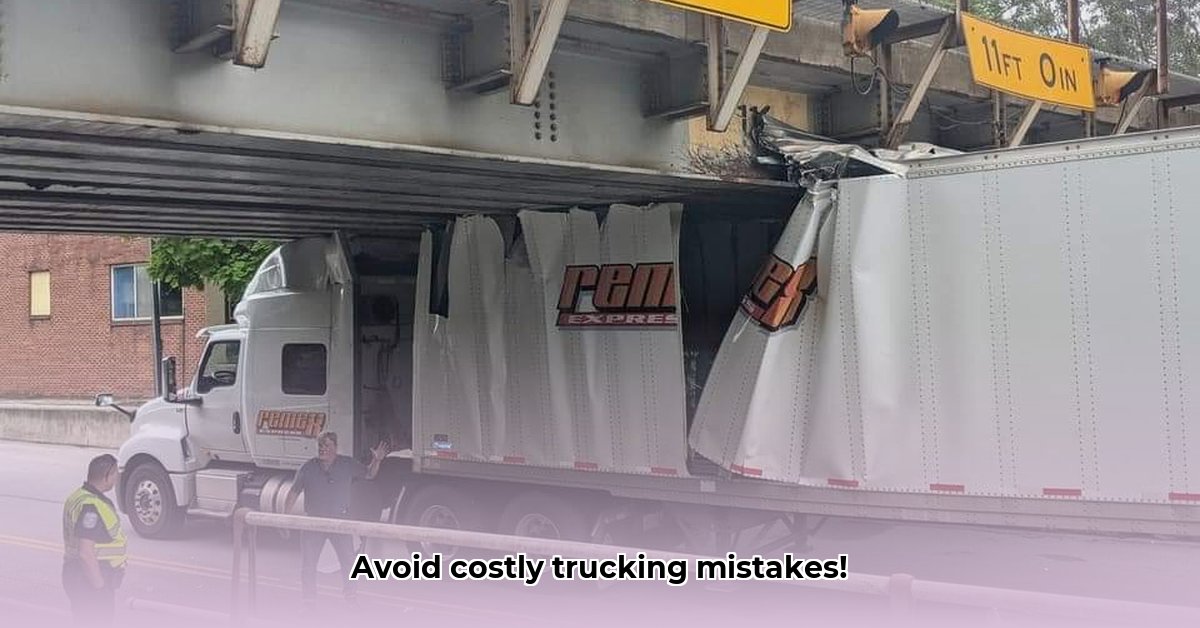
Let's face it: hauling goods across the country is a complex undertaking. One critical, often overlooked aspect is height clearance. Incorrect height estimations can result in hefty fines, dangerous accidents, and significant delays. This guide provides a comprehensive approach to navigating tractor-trailer height regulations, ensuring smooth and safe journeys. For a visual guide, see this helpful diagram.
Understanding Basic Dimensions: Inches Matter
The typical height of a loaded tractor-trailer ranges from 13.5 to 14 feet (approximately 4.1 to 4.3 meters). However, this is a general guideline. The actual height varies based on cargo, trailer type, and tire condition. It's crucial to distinguish between overall height (ground to the highest point) and clearance height (ground to the lowest point of the trailer). Maintaining awareness of both is essential for safe navigation, especially under low clearances. Even a few inches can make a significant difference.
Trailer Type Variations: Size and Shape
Different trailer types have varying heights. A flatbed, with its open design, usually has a lower profile than a refrigerated trailer, which requires extra space for its cooling unit.
| Trailer Type | Approximate Height Range (ft) | Considerations |
|---|---|---|
| Dry Van | 13.0 - 13.6 | Standard height; variations exist among manufacturers. |
| Refrigerated | 13.5 - 14.0 | Refrigeration unit adds significant height. |
| Flatbed | Variable | Highly dependent on cargo height and load distribution. |
| Lowboy | Lower than standard | Designed for oversized, low-profile loads. |
| Tanker | Highly Variable | Depends on tank size and transported liquid. |
These are average ranges; actual heights vary by model and modifications.
State-Level Regulations: A Patchwork of Rules
There’s no single, national height standard in the US. Each state establishes its own regulations, creating a complex system for cross-state operations. This means you must check height restrictions for every state on your route. Failure to do so can result in significant fines and delays. Several online resources and apps are available to assist in route planning that incorporates state-specific height limits. Utilizing these tools is strongly recommended. Ignoring state regulations can lead to accidents and hefty fines. What is the financial cost of non-compliance in your state?
Load Planning: Strategic Cargo Management
Proper load planning is critical. It's not merely about fitting everything in; it’s about safety and legal compliance. Accurately measure your cargo's height and ensure it's securely fastened to prevent shifting during transit. Unsecured loads can significantly increase overall height, leading to violations and potential accidents. How much does improper load securing cost your company annually?
Route Planning and Technology: Utilizing Modern Tools
GPS systems and route-planning software frequently integrate height restrictions. By inputting your trailer's and load's dimensions, you receive routes that accommodate your vehicle's height requirements. This proactive approach is essential for avoiding low-clearance areas and ensuring efficient journeys. What percentage of your routes currently utilize height-aware navigation systems?
Compliance and Consequences: The High Cost of Non-Compliance
Non-compliance comes at a significant cost. Bridge strikes and accidents can lead to severe injuries, fatalities, hefty fines for companies, and even license suspension for drivers. The financial and safety risks far outweigh any potential time savings from ignoring regulations. What is your company's protocol for addressing height-related violations?
Best Practices: Ensuring Safe and Efficient Operations
- Pre-Trip Research: Verify state height restrictions before departure.
- Technology Integration: Utilize route-planning software that accounts for height limitations.
- Precise Load Planning: Carefully measure and secure your cargo to minimize height.
- Regular Inspections: Conduct routine trailer inspections to identify any height changes.
- Driver Training: Train drivers on height awareness and route planning best practices.
Resources and Further Reading
- Heavy Haul Trucking Height Limits Map
This comprehensive guide emphasizes proactive planning, utilizing available technologies, and adherence to regulations to ensure safe and efficient transportation of goods.